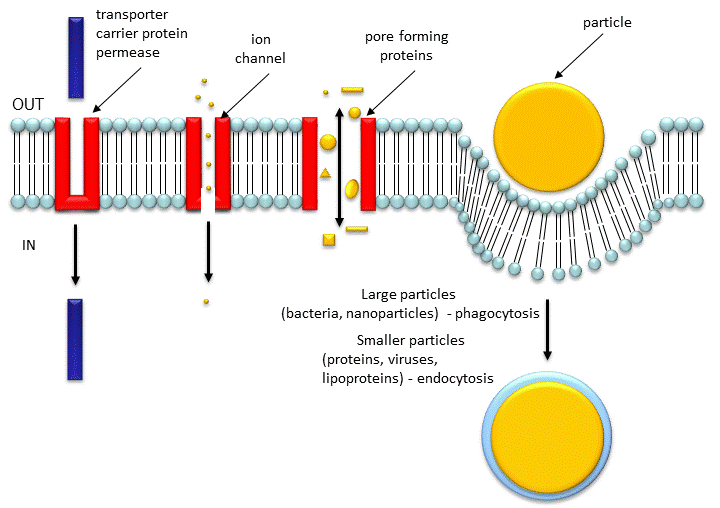Biochemistry Online: An Approach Based on Chemical Logic

CHAPTER 6 - TRANSPORT AND KINETICS
A: PASSIVE AND FACILITATED DIFFUSION
BIOCHEMISTRY - DR. JAKUBOWSKI
Last Update: 04/08/16
|
Learning Goals/Objectives for Chapter 6A: After class and this reading, students will be able to
|
A4. Membrane Pores
The Nuclear Pore Complex
Channels have pores which can be gated open and allow selective flow of ions. Porins have larger entrances which allow larger molecules to pass the bilayer. The biggest pore structure known is the nuclear pore complex, which has a combined molecular mass around 125,000,000! It's job is to shuttle small molecules through passive diffusion down a concentration gradient through the pore. In addition it moves large molecules and molecular structures (proteins, RNA, and perhaps ribosomes) across the nuclear membrane in a process which requires energy. The proteins that comprise this complex are called nucleoporins, of which there appears to be around 30 in yeast. Large proteins that pass through the pore must first be bound to a cargo receptor, which can move the "cargo" across the pore with concomitant GTP hydrolysis.
Figure: Movement of Molecules and Particles Through Membranes

Porins: TBA
Navigation
Return to Chapter 6A: Passive and Facilitated Diffusion Contents
Return to Biochemistry Online Table of Contents
Archived version of full Chapter 6A: Passive and Facilitated Diffusion

Biochemistry Online by Henry Jakubowski is licensed under a Creative Commons Attribution-NonCommercial 4.0 International License.